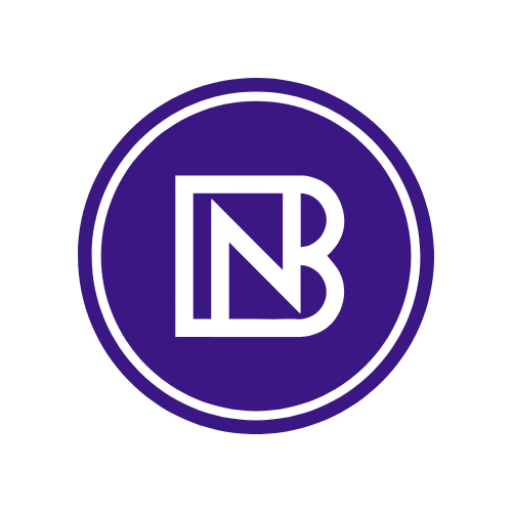Advertisements
Have you ever wondered how vulnerable your online identity is today, even when you only share the bare essentials? We live in a context in the United States where breaches are very costly: IBM's Cost of a Data Breach 2023 report estimates an average of $4.45 million per incident.
In this guide, you'll learn simple, step-by-step habits to protect your identity and reduce risks. You don't need to be a tech expert; informed decisions and practical tools are all you need.
You'll see what personal data apps and banks ask for, why sharing less helps, and how laws like CCPA/CPRA, VCDPA, COPPA, and HIPAA give you basic rights.
You will also distinguish privacy and securityand you will learn about useful controls (MFA, encryption, backups) that improve both protection and cybersecurity.
This article encourages you to think critically, take action today, and consult official sources when necessary. By the end, you'll have an actionable list to protect your digital life.
Introduction: Why personal data protection matters in the United States today
Every time you share information online, there are real risks. IBM's 2023 Cost of a Data Breach report estimates an average cost of $4.45 million per breach. This shows that breaches are not isolated incidents.
Current threats and what you stand to lose
Data breaches expose personal and financial information that criminals use for identity theft and credit card fraud. Your data is often stored across multiple companies, so thinking "it won't happen to me" is risky.
Privacy vs. security: practical differences
Privacy It answers what information they collect and with what permission. Security These are the technical controls that prevent unauthorized access.
- Privacy: clear notices, consent and transparency regarding the use of data.
- Security: MFA, encryption, and logging to detect suspicious access.
- Laws and compliance: CCPA/CPRA, VCDPA and CPA give you tools; COPPA and HIPAA protect certain people (children and health).
When someone asks you for information, ask why they need it and for how long. Share less, demand transparency, and set up alerts on your accounts to detect early warning signs.
What is meant by personal data and sensitive data in everyday life
Knowing what kind of information about you is circulating online helps you decide what to share and what to keep private.
Personal data These are pieces of information that identify you: name, email, phone number, address, social media username, and photo. Biometrics and card or account numbers are also included because they enable transactions and identity verification.
- Sensitive data: Information about health, sexual orientation, ideology, or racial origin. These pose a greater risk and require more careful attention.
- Metadata—locations, times, and devices—reveals habits and can facilitate tracking.
- Before giving out information, ask yourself: if it's lost, what damage will it cause? Adjust the level of control according to that type of impact.
In practiceShare only what's essential for the service you need. Review your phone's permissions: camera, microphone, location, and contacts should only be enabled when necessary.
Helpful tip: Avoid posting photos of documents or boarding passes; they contain codes useful for fraud. Less exposure means less vulnerability to attacks and errors.
Personal data protection: key principles you must apply
Apply practical principles to limit what information about you is shared and who can use it. These pillars—drawn from frameworks like NIST and the FIPPs—help you demand accountability and take action in everyday situations: an app that requests your location, your bank, or an online store.
Access, transparency and consent
Access: Request a copy of your logs and activity history if anything concerns you. Many platforms have portals where you can download this information.
Transparency: Look for clear notices that explain what is being collected, what it's used for, and who it's being shared with. If it's not obvious, ask for clarification via chat or email.
Consent: Choose opt-in when you can and withdraw authorization if you no longer want a service to continue treatment.
Quality and minimization
- Correct outdated emails and addresses to avoid errors in sensitive communications.
- If an app asks for more information than necessary, deny permissions or use approximate versions (e.g., gradual location).
Limitation of use and conservation
Request clear deadlines and purposes: your records should only be kept as long as necessary. Request deletion when closing accounts and keep documentation of your requests (date and response).
For more details on principles and rules you can read the fundamental principles and apply them to your regular services.
Basic US laws and compliance without technical jargon
Understanding the basic rules on information handling helps you demand transparency without being a lawyer.
There is no single federal law in the United States. Instead, several states offer their own. rights that protect you when you share data.
CCPA/CPRA, VCDPA and CPA: More control for consumers
In California, you can request access to, deletion of, and opt out of the sale or sharing of your data. Virginia and Colorado have similar rules.
Check if your state offers similar protections and use the organization's channels to exercise your rights. rights.
What to learn from GDPR and NIST frameworks
The GDPR is a good reference: requires clarity on purpose, minimization and conservation periods.
The NIST frameworks and FIPPs provide guidance on management, quality, and safety practices for data processing. They ask companies what type of processing they perform and for how long they store the data.
- Remember COPPA if you share information about minors.
- HIPAA covers healthcare providers; many apps are not included, check for notices.
- The Epic Games case shows that fines exist and are real.
Advice: When policies change, review how the processing changes and assess whether you still agree at that time.
Easy-to-implement cybersecurity best practices
With simple and consistent steps you can strengthen the security Manage your accounts in minutes. Here are practical steps that apply to banking, social media, travel, and remote work.

Passwords, SSO, and MFA
Use long and unique passphrases and active MFA in email, banking, and social media. This blocks unauthorized access even if someone obtains your password.
Consider using SSO only with trusted providers and always with MFA; this reduces password fatigue without losing control.
Encryption, backups, and DLP
Encrypt your laptop's hard drive and use encryption in messaging apps to protect information in transit and at rest.
Create automatic backups to two destinations (cloud + external drive). This helps you recover from ransomware.
If your organization offers DLP, verify that it blocks leaks and reports incidents.
IAM and audit logs
Use role-based access control to grant minimal permissions. Review activity logs and enable login alerts when you detect anything unusual.
Daily digital hygiene
- Avoid open Wi-Fi in airports and hotels. Use your mobile hotspot or a trusted VPN.
- Update your system and apps on time; many attacks exploit pending patches.
- On social media, limit who sees your posts and disable searches by phone number.
- Review app permissions and revoke old access from the Google/Apple security panel.
Practical advice: Choose providers that offer encryption, DLP, and incident notifications. Request reports or evidence of their practices and use guides like These recommendations to implement them at home and at work.
Privacy by design in your services and devices
Privacy by default This means that services only collect information if you authorize it. This reduces surprises and gives you control over who accesses your digital life.
Configure opt-in privacy in your apps
Enable opt-in in apps and deny ad tracking on iOS and Android. Revoke identifiers if they are not needed.
Practical advice: Use a separate account for banking and another for public records.
Classify information and limit permissions on mobile and cloud
Keep your inventory simple: finances, health, and family photos. Protect sensitive information with folders that require two-factor authentication.
- In your browser, install tracking blockers and delete third-party cookies.
- On mobile, grant permissions only when the app is in use; revoke precise location if it is not essential.
- In smart home settings, disable microphones when not in use and review shared access.
Documenta Changes in a note to maintain consistency. This way you apply clear principles and gain more control over your data and the consent you grant.
Manage your consent and your rights as a user
Learn how to exercise your rights and control who processes your information with simple and practical steps.
How to request access, rectification, objection or deletion
Request access to your personal data and the list of third parties with whom it is shared. Request corrections when there are errors and demand deletion if you close an account.
Quick steps:
- Identify the channel: look for "Privacy" or "Data Request" on the site or app and save a screenshot of the moment.
- Request portability in common format (CSV/JSON) if you want to change providers.
- Attach the minimum documents necessary to verify your identity; do not send more information than required.
Signals to detect clear and useful warnings
A helpful notice explains what data is collected, its purpose, the basis for consent, and the retention periods.
Always keep the answer and the date; it's evidence if you need to escalate.
- Be wary of vague texts without a list of third parties or deadlines.
- Ask for written clarifications and check if they notify you of substantial changes.
- If you do not get a reasonable response, consider contacting state authorities or seeking professional advice.
Suppliers and third parties: assess risks before sharing data
Before sharing information with a providerAsk yourself if the service really needs that level of access and how it will be protected.
Organizations have a responsibility when they share information with third parties. Ask for proof, not just promises. This reduces risks and improves the relationship between you and the service.
What to expect from a service: practices, notifications, and controls
Use this quick list to evaluate fintech, digital health, education, or travel before giving your information.
- Encryption: Confirms encryption in transit and at rest and MFA for administrative access.
- Audits: It requests summaries of independent audits and activity logs.
- Retention and deletion: Verify policies and require removal upon termination of the relationship or agreement.
- Agreements: Review the processing contract and who the critical sub-suppliers are.
- Technical controls: Ask about DLP, classification, IAM with least privileges, and continuity plans.
Reject excessive requests: the type of information must match the service offered.
As a legal reference, frameworks like the GDPR require organizations to be accountable for compliance and responsibility. Choose services that publish metrics and clear channels for reporting incidents.
Generative AI and new risks: use technology wisely
Generative AI offers useful shortcuts, but it also expands the areas where your information can get out of control. If you use it without rules, a small mistake can turn into an incident that affects trust and compliance.
Don't share sensitive data with chatbots: learn from the Samsung case
Samsung engineers inserted proprietary code into ChatGPT, and that content was exposed in models and results. This case demonstrates that what you paste into a public chatbot can become uncontrollable.
If you process personal data without permission, you could violate regulations and agreements with clients. Avoid uploading passwords, proprietary code, or medical records to open services.
Internal policies and controls for AI: minimize leaks and ensure compliance
Define clear rules in your organization. Establish what is allowed, who reviews it, and how each prompt is logged.
- Do not paste sensitive data into public chatbots; anonymize and minimize it before processing.
- Use enterprise versions with agreements on retention, training exclusion, and logging.
- Document the timing and purpose of each interaction and conduct periodic audits.
- Evaluate privacy and cybersecurity as you would with any third-party provider and offer alternatives to your customers.
"Formal policies and controls allow us to take advantage of these technologies without losing control or trust."
Conclusion
Small, consistent habits are the most effective way to maintain control over your information and reduce risks.
Share less, ask about the purpose, and demand clear controls from any organization or service you use.
Apply principles such as minimization, consent and limitation: this reinforces both technical protection (IAM, MFA, encryption, DLP) and daily practice.
Keep your rights in mind: access, rectification, objection, and deletion where applicable. Review permissions periodically and document requests and responses.
If you have legal or compliance questions, consult official sources or specialists. Your judgment is the first line of defense; improve one setting each week to better protect your data and the people around you.



